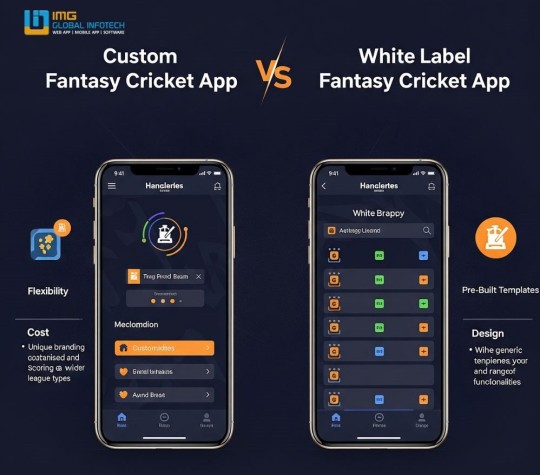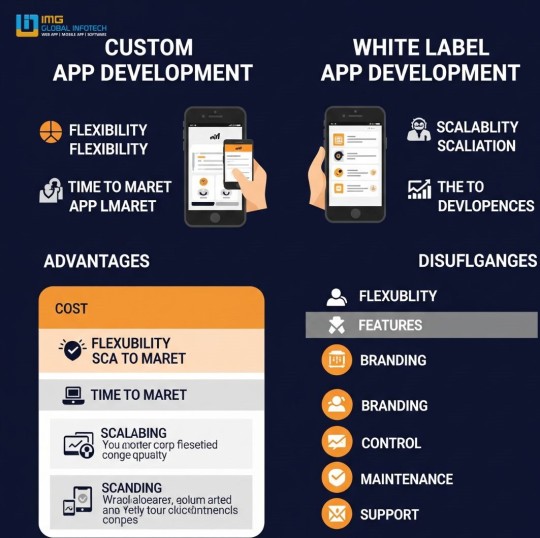#Big Data Testing for enterprises
Explore tagged Tumblr posts
Text
The Offspring
*sobs and cries*
also fuck that admiral
like it's super impressive that they made a character i hate more than madrox
like at least madrox was the first guy to fuck up like that and he didn't do any lasting damage, meanwhile admiral haftel here already has the precedent, is a huge jerk anyway, and kills a kid. I mean the last line he has in this episode is "it just wasn't meant to be," said about Data trying to save the life of the daughter that haftel killed. 10/10 character
but like tbh Lal's also such a great character, like she chooses to be a woman, wants to kiss Riker and dies of an anxiety attack, like that's just me in a nutshell except I'm inexplicably still alive
okay but like that riker thing was so funny. Like imagine you're commander Riker, you're doing business as usual, you hear from Geordi that Data has a kid now, okay sure, but you gotta go on the away mission, and then you end up never being introduced to her because it's a really big ship with like a thousand people on board, so one day you go to Ten Forward, and the bartender kisses you (probably happens all the time to him) and Data walks in and asks "What are your intentions with my daughter".
You see Data's line about letting Lal choose her own sex and species thrown around a lot, and it is of course nice, but the episode also pretty clearly states that you can't change your sex (like, neither biological species, nor androids) and also states that being neither male nor female is inadequate, so like yeah. It's from 1990. It's just not as progressive as some random screenschots might make it seem.
Oh, I adored the bit with Crusher and Data, like when he just walks in and is like "I need some advice from a good parent" and Crusher's like "and you went to me 🥺" and ahhhh it's so lovely and of course Crusher affirming Data having emotions is great yay
Also very excited to see another Starfleet officer being dedicated to being a school teacher. it just warms my heart.
Looking back at how TNG has portrayed Starfleet outside of the Enterprise crew, I do find it interesting how evil they are. Like, in season one we have an admiral who fucked up a whole planet and basically covered it up (Too Long a Season), an admiral who who's playing power games with other admirals and annoys the crew for a whole episode testing them (Coming of Age), then they're all controlled by aliens (Conspiracy), try to take away Data's rights and create a slave army of androids (The Measure of a Man) and of course here they want to away a person's rights because they think that will increase their own technological progress. At best we see some other friendly ships but they usually get destroyed (the captains in Conspiracy, the Yamato in Conspiracy and the Enterprise-C in Yesterday's Enterprise), or a couple of mission-giver admirals (like in The Defector).
I do really appreciate the way they use Picard in these situations, like he clearly is bigoted about Data having a daughter at the start, but like doctor Pulaski my beloved he comes around and ends up defending Data from what some other, worse people are trying to do to Data now.
#the next generation rewatch#star trek#star trek the next generation#star trek tng#tng#this post was exiled by the queue continuum
8 notes
·
View notes
Text
Unlock creative insights with AI instantly
What if the next big business idea wasn’t something you “thought of”… but something you unlocked with the right prompt? Introducing Deep Prompt Generator Pro — the tool designed to help creators, solopreneurs, and future founders discover high-impact business ideas with the help of AI.
💡 The business idea behind this very video? Generated using the app. If you’re serious about building something real with ChatGPT or Claude, this is the tool you need to stop wasting time and start creating real results.
📥 Download the App: ✅ Lite Version (Free) → https://bit.ly/DeepPromptGeneratorLite 🔓 Pro Version (Full Access) → https://www.paypal.com/ncp/payment/DH9Z9LENSPPDS
🧠 What Is It? Deep Prompt Generator Pro is a lightweight desktop app built to generate structured, strategic prompts that help you:
✅ Discover profitable niches ✅ Brainstorm startup & side hustle ideas ✅ Find monetization models for content or products ✅ Develop brand hooks, angles, and offers ✅ Unlock creative insights with AI instantly
Whether you’re building a business, launching a new product, or looking for your first real side hustle — this app gives your AI the clarity to deliver brilliant results.
🔐 Features: Works completely offline No API or browser extensions needed Clean UI with categorized prompts One-click copy to paste into ChatGPT or Claude System-locked premium access for security
🧰 Who It’s For: Founders & solopreneurs Content creators Side hustlers AI power users Business coaches & marketers Anyone who’s tired of “mid” AI output
📘 PDF Guide Included – Every download includes a user-friendly PDF guide to walk you through features, categories, and how to get the best results from your prompts.
📂 Pro Version includes exclusive prompt packs + priority access to new releases.
🔥 Watch This If You’re Searching For: how to use ChatGPT for business ideas best prompts for startup founders AI tools for entrepreneurs side hustle generators GPT business prompt generator AI idea generator desktop app ChatGPT for content creators
📣 Final Call to Action: If this tool gave me a business idea worth filming a whole video about, imagine what it could help you discover. Stop guessing — start prompting smarter.
🔔 Subscribe to The App Vault for weekly tools, apps, and automation hacks that deliver real results — fast.🔓 Unlock Your PC's Full Potential with The App Vault Tiny Tools, Massive Results for Productivity Warriors, Creators & Power Users
Welcome to The App Vault – your ultimate source for lightweight desktop applications that deliver enterprise-grade results without bloatware or subscriptions. We specialize in uncovering hidden gem software that transforms how creators, freelancers, students, and tech enthusiasts work. Discover nano-sized utilities with macro impact that optimize workflows, turbocharge productivity, and unlock creative potential.
🚀 Why Our Community Grows Daily: ✅ Zero Fluff, Pure Value: 100% practical tutorials with actionable takeaways ✅ Exclusive Tools: Get first access to our custom-built apps like Deep Prompt Generator Pro ✅ Underground Gems: Software you won't find on mainstream tech channels ✅ Performance-First: Every tool tested for system efficiency and stability ✅ Free Resources: Download links + config files in every description
🧰 CORE CONTENT LIBRARY: ⚙️ PC Optimization Arsenal Windows optimization secrets for buttery-smooth performance System cleanup utilities that actually remove 100% of junk files Memory/RAM optimizers for resource-heavy workflows Startup managers to slash boot times by up to 70% Driver update automation tools no more manual hunting Real-time performance monitoring dashboards
🤖 AI Power Tools Local AI utilities that work offline for sensitive data Prompt engineering masterclass series Custom AI workflow automations Desktop ChatGPT implementations Niche AI tools for creators: image upscalers, script generators, audio enhancers AI-powered file organization systems
⏱️ Productivity Boosters Single-click task automators Focus enhancers with distraction-killing modes Micro-utilities for batch file processing Smart clipboard managers with OCR capabilities Automated backup solutions with versioning Time-tracking dashboards with productivity analytics
🎨 Creative Workflow Unlockers Content creation accelerators for YouTubers Automated thumbnail generators Lightweight video/audio editors 50MB Resource-efficient design tools Cross-platform project synchronizers Metadata batch editors for digital assets
🔍 Niche Tool Categories Open-source alternatives to expensive software Security tools for privacy-conscious users Hardware diagnostic toolkits Custom scripting utilities for power users Legacy system revival tools
youtube
#DeepPromptGenerator#BusinessIdeas#ChatGPTPrompts#SideHustleIdeas#StartupIdeas#TheAppVault#PromptEngineering#AIProductivity#SolopreneurTools#TinyToolsBigImpact#DesktopApp#ChatGPTTools#FiverrApps#Youtube
2 notes
·
View notes
Text
**From PCI DSS to HIPAA: Ensuring Compliance with Robust IT Support in New York City**
Introduction
In contemporary digital world, organisations are a growing number of reliant on science for their operations. This dependence has caused a heightened focus on cybersecurity and compliance specifications, specifically in regulated industries like healthcare and finance. For services working in New York City, wisdom the nuances of compliance frameworks—specifically the Payment Card Industry Data Security Standard (PCI DSS) and the Health Insurance Portability and Accountability Act (HIPAA)—is quintessential. Navigating those policies requires potent IT give a boost to, which encompasses everything from community infrastructure to documents management.
With the rapid advancement of technological know-how, organizations ought to additionally remain abreast of high-quality practices in details technologies (IT) give a boost to. This article delves into how organizations can ensure that compliance with PCI DSS and HIPAA thru triumphant IT processes whilst leveraging materials from accurate providers like Microsoft, Google, Amazon, and others.
Understanding PCI DSS What is PCI DSS?
The https://brooksxaoj631.over.blog/2025/04/navigating-cybersecurity-in-the-big-apple-essential-it-support-solutions-for-new-york-businesses.html Payment Card Industry Data Security Standard (PCI DSS) is a group of safety principles designed to look after card tips all the way through and after a economic transaction. It was once proven by using significant credit card enterprises to fight growing times of fee fraud.
Why is PCI DSS Important?
Compliance with PCI DSS enables groups defend touchy economic recordsdata, thereby modifying visitor trust and slicing the possibility of info breaches. Non-compliance can bring about intense consequences, such as hefty fines or maybe being banned from processing credit score card transactions.

youtube
Key Requirements of PCI DSS Build and Maintain a Secure Network: This carries fitting a firewall to preserve cardholder knowledge. Protect Cardholder Data: Encrypt kept files and transmit it securely. Maintain a Vulnerability Management Program: Use antivirus utility and develop protect structures. Implement Strong Access Control Measures: Restrict entry to in basic terms people that want it. Regularly Monitor and Test Networks: Keep observe of all get admission to to networks and aas a rule look at various protection tactics. Maintain an Information Security Policy: Create insurance policies that cope with defense necessities. Exploring HIPAA Compliance What is HIPAA?
The Health Insurance Portability and Accountability Act (HIPAA) sets the ordinary for conserving sensitive sufferer know-how in the healthcare trade. Any entity that offers with blanketed well being know-how (PHI) have got to adjust to HIPAA regulations.
Importance of HIPAA Compliance
HIPAA compliance no longer handiest protects affected person privateness however also guarantees more suitable healthcare outcome with the aid of permitting maintain sharing of affected person data between permitted entities. Violations can cause titanic fines, prison results, and wreck to popularity.
" style="max-width:500px;height:auto;">

Core Components of HIPAA Compliance Privacy Rule: Establishes countr
2 notes
·
View notes
Text
French initiative for responsible AI leaders - AI News
New Post has been published on https://thedigitalinsider.com/french-initiative-for-responsible-ai-leaders-ai-news/
French initiative for responsible AI leaders - AI News
ESSEC Business School and Accenture have announced the launch of a new initiative, ‘AI for Responsible Leadership,’ which marks the 10th anniversary of the establishment of the role of Chair at ESSEC, titled the ESSEC Accenture Strategic Business Analytics Chair.
The initiative aims to encourage the use of artificial intelligence by leaders in ways that are responsible and ethical, and that lead to high levels of professional performance. It aims to provide current and future leaders with the skills they require when faced with challenges in the future; economic, environmental, or social.
Several organisations support the initiative, including institutions, businesses, and specialised groups, including ESSEC Metalab for Data, Technology & Society, and Accenture Research.
Executive Director of the ESSEC Metalab, Abdelmounaim Derraz, spoke of the collaboration, saying, “Technical subjects are continuing to shake up business schools, and AI has opened up opportunities for collaboration between partner companies, researchers, and other members of the ecosystem (students, think tanks, associations, [and] public service).”
ESSEC and Accenture aim to integrate perspectives from multiple fields of expertise, an approach that is a result of experimentation in the decade the Chair has existed.
The elements of the initiative include workshops and talks designed to promote the exchange of knowledge and methods. It will also include a ‘barometer’ to help track AI’s implementation and overall impact on responsible leadership.
The initiative will engage with a network of institutions and academic publications, and an annual Grand Prix will recognise projects that focus on and explore the subject of AI and leadership.
Fabrice Marque, founder of the initiative and the current ESSEC Accenture Strategics Business Analytics Chair, said, “For years, we have explored the potential of using data and artificial intelligence in organisations. The synergies we have developed with our partners (Accenture, Accor, Dataiku, Engie, Eurofins, MSD, Orange) allowed us to evaluate and test innovative solutions before deploying them.
“With this initiative, we’re taking a major step: bringing together an engaged ecosystem to sustainably transform how leaders think, decide, and act in the face of tomorrow’s challenges. Our ambition is clear: to make AI a lever for performance, innovation and responsibility for […] leaders.”
Managing Director at Accenture and sponsor of the ESSEC/Accenture Chair and initiative, Aurélien Bouriot, said, “The ecosystem will benefit from the resources that Accenture puts at its disposal, and will also benefit our employees who participate.”
Laetitia Cailleteau, Managing Director at Accenture and leader of Responsible AI & Generative AI for Europe, highlighted the importance of future leaders understanding all aspects of AI.
“AI is a pillar of the ongoing industrial transformation. Tomorrow’s leaders must understand the technical, ethical, and human aspects and risks – and know how to manage them. In this way, they will be able to maximise value creation and generate a positive impact for the organisation, its stakeholders and society as a whole.”
Image credit: Wikimedia Commons
See also: Microsoft and OpenAI probe alleged data theft by DeepSeek
Want to learn more about AI and big data from industry leaders? Check out AI & Big Data Expo taking place in Amsterdam, California, and London. The comprehensive event is co-located with other leading events including Intelligent Automation Conference, BlockX, Digital Transformation Week, and Cyber Security & Cloud Expo.
Explore other upcoming enterprise technology events and webinars powered by TechForge here.
#accenture#ai#ai & big data expo#ai news#amp#Analytics#anniversary#approach#artificial#Artificial Intelligence#automation#Big Data#Business#business analytics#california#Cloud#Collaboration#Companies#comprehensive#conference#cyber#cyber security#data#data theft#deepseek#deploying#Digital Transformation#economic#education#employees
3 notes
·
View notes
Text
oh boy IT'S tng update time. last night* we watched "imaginary friend" and "i, borg."
*tonight. it's 1am. whatever. it's posting tomorrow when i'll be awake but busy. anyway im gonna have to start splitting these up so tumblr will stop FUCKING me re my character count
imaginary friend:
what i like about this episode and indeed tng as a whole is that the little girl was fucking adorable. tng fans, your show has at least one point of validity. whenever there was a child on tos i wanted to throw them out of the airlock because they acted possessed. all the children on tng inspire within me motherly concern.
HOWEVER. THERE SHOULD NOT BE. CHILDREN ON A STARSHIP.
we've gone over this at length. we don't need to do it again. i am sick to death of hearing myself talk about it. i want to stop. and yet. every. and i mean EVERY. SINGLE. PROBLEM. in this episode. happened because there were children on a starship.
problem #1: child is making up a fake imaginary friend instead of making real ones = it's because her dad hops from starship to starship
problem #2 her imaginary friend is real now and wants to drown her in the pool like in that one episode of s*pernatural = this is because an alien, from space, read her mind, which it could not have done if she wasn't in space on a starship
problem #3: the alien HATES the grownups and thinks they should die = because she is seeing the ship from a child's pov, because there are children on this starship
and on and on and on.
aside from this huge and ongoing point of contention it was solidly watchable. i liked the little girl. i like guinan. i like worf being a big old softie when he found them out of bounds. i like people not undermining deanna's counseling work. i liked the horrifically unsettling imaginary friend with laser eyes who definitely absolutely inspired 2.11 playthings.
can anyone tell me if the other star trek shows just let them have kids on the ships? ds9 i get because that's a space station but are there kids on the ship in enterprise? voyager? discovery? genuinely please write in i can't take living like this
i, borg:
ooooooh. ooh i am twirling my hair and kicking my feet and giggling about it. OHHH finally we get a good tng episode. and not just a good episode a GREAT episode. the liz community has forgiven tng. oh baby where do i even begin
okay, firstly, beverly. she so instantly sees someone injured and HAS to help, i mean HAS to, it's so good. it's very bonescore in a way that doesn't feel like they're trying to make her a cheap bones knockoff but rather a spiritual successor. he would have also helped his enemy rather than watching him die. hell, he DID do that and got quite literally mind-raped for his trouble, and he'd probably do it again. i was really really lukewarm on poor bev at first but she's come into her own so well and i'm proud of her
the borg himself - third of five, aw, just like seven of nine - but no, hugh - the name is dumb but whatever i'm glad he has one - was well-cast. it would have been easy to make him uncanny and an unpleasant presence onscreen (this was my biggest issue with data's daughter even though the ep DID make me cry, deeply sorry to data whomst i love the most). his "you will be assimilated resistance is futile" song and dance was actually really funny when played off of geordi's wry indifference. "ok, but before we get assimilated, can we please finish x test?" so true king
geordi's a natural choice to pair with this guy because when he's not being the creepiest person on earth to holodeck girls he's sociable, outgoing, and patient. PLUS he has experience befriending machines because of data. hugh actually reminded me of data in some ways because of his general lack of understanding re: humanity but - and this is critical to me - HE IS HUMAN
like, i feel like the episode didn't quite nail the point home hard enough possibly because they were afraid of the implications but the cold hard truth of the matter is that each and every person on the borg cube IS A PERSON. they have been assimilated, but we've twice now seen that it's possible to unassimilate them with only a few days of effort. picard (and guinan!) consider the entire collective their enemy but the collective is comprised of brainwashed prisoners. those fucked up little borg babies they found in the cube were assimilated as INFANTS - i assume they weren't born on the cube bc if the borg could reproduce on its own it wouldn't need to assimilate - but even if they were born on the cube, they had no choice but to be this. you know.
which is whyyyy it's so fucked picard was like yeah give hugh some digital poison let him carry it back to his cube and we'll kill them like ants <3 like, oh my god his lingering borg trauma or whatever. MWAH. when he told deanna he didn't wanna talk. when he and guinan had to trauma-bond while fencing. when he told geordi that he needed to unattach himself because it was nothing more than animal experimentation. STONE FUCKING COLD BY THE WAY. he is fighting in the war on animal experimentation on the side of animal experimentation. he was going to let his cre heal and feed that kid and then send him back laced with poison. diabolical <3
and, of course, when he didn't want to speak or associate that borg kid at all because that's who he used to be AND WHO HE STILL IS in some corner of his brain (!!!)
LIKE. WHEN HE WAS FINALLY CONVINCED TO INTERROGATE THIS KID. and IMMEDIATELY broke out the locutus voice. he still remembered all the protocol! the way of speaking! everything! i was so shocked and thrilled.
i love also how everyone who spoke to hugh came away extremely unsettled but also totally convinced of his humanity. even guinan, which was so fun, because she was even more anti-borg than picard at first and they were bonding over trauma and fantasy racism. that bit where hugh, who had only known about the concept of loneliness for like an hour, immediately pegged her as lonely after like three lines of dialogue. oh my GOD???
i was decently satisfied with the ending - obviously they couldn't send him back with poison nor could they protect him from the borg, but i wish they had informed him of the inevitable memory wipe before he made his choice. (a selfless choice! he loves geordi!!) still i think he mostly walked into it with eyes open. very sad but very proud of him.
my one tiny nitpick with this episode is that for all beverly's genuine and justified concern about hugh, i don't think theyre ever gonna address the fact that she shot and possibly killed some of the borg in the episode where picard got assimilated. i feel like after realizing they are all people, like hugh, she should also realize she's broken the hippocratic oath, and have a little crisis about it. i have no idea why we had the DOCTOR shooting and killing anybody but let alone if we aren't gonna get into that. i don't think anyone cares/cared except me though.
but tbh, for me this is one of the main draws of the borg. they're ALL brainwashed cyber-assassins and they're ALL prisoners and in theory ALL of them could be saved if only they would stop attacking first. sure, yeah, in fights you gotta do what you gotta do because your own life has gotta come first, but the unique scifi horror aspect of all of those guys being perfectly innocent people fucks and they should utilize it a little more!!!
NEXT TIME: "the next phase" and "the inner light."
17 notes
·
View notes
Text
How-To IT
Topic: Core areas of IT
1. Hardware
• Computers (Desktops, Laptops, Workstations)
• Servers and Data Centers
• Networking Devices (Routers, Switches, Modems)
• Storage Devices (HDDs, SSDs, NAS)
• Peripheral Devices (Printers, Scanners, Monitors)
2. Software
• Operating Systems (Windows, Linux, macOS)
• Application Software (Office Suites, ERP, CRM)
• Development Software (IDEs, Code Libraries, APIs)
• Middleware (Integration Tools)
• Security Software (Antivirus, Firewalls, SIEM)
3. Networking and Telecommunications
• LAN/WAN Infrastructure
• Wireless Networking (Wi-Fi, 5G)
• VPNs (Virtual Private Networks)
• Communication Systems (VoIP, Email Servers)
• Internet Services
4. Data Management
• Databases (SQL, NoSQL)
• Data Warehousing
• Big Data Technologies (Hadoop, Spark)
• Backup and Recovery Systems
• Data Integration Tools
5. Cybersecurity
• Network Security
• Endpoint Protection
• Identity and Access Management (IAM)
• Threat Detection and Incident Response
• Encryption and Data Privacy
6. Software Development
• Front-End Development (UI/UX Design)
• Back-End Development
• DevOps and CI/CD Pipelines
• Mobile App Development
• Cloud-Native Development
7. Cloud Computing
• Infrastructure as a Service (IaaS)
• Platform as a Service (PaaS)
• Software as a Service (SaaS)
• Serverless Computing
• Cloud Storage and Management
8. IT Support and Services
• Help Desk Support
• IT Service Management (ITSM)
• System Administration
• Hardware and Software Troubleshooting
• End-User Training
9. Artificial Intelligence and Machine Learning
• AI Algorithms and Frameworks
• Natural Language Processing (NLP)
• Computer Vision
• Robotics
• Predictive Analytics
10. Business Intelligence and Analytics
• Reporting Tools (Tableau, Power BI)
• Data Visualization
• Business Analytics Platforms
• Predictive Modeling
11. Internet of Things (IoT)
• IoT Devices and Sensors
• IoT Platforms
• Edge Computing
• Smart Systems (Homes, Cities, Vehicles)
12. Enterprise Systems
• Enterprise Resource Planning (ERP)
• Customer Relationship Management (CRM)
• Human Resource Management Systems (HRMS)
• Supply Chain Management Systems
13. IT Governance and Compliance
• ITIL (Information Technology Infrastructure Library)
• COBIT (Control Objectives for Information Technologies)
• ISO/IEC Standards
• Regulatory Compliance (GDPR, HIPAA, SOX)
14. Emerging Technologies
• Blockchain
• Quantum Computing
• Augmented Reality (AR) and Virtual Reality (VR)
• 3D Printing
• Digital Twins
15. IT Project Management
• Agile, Scrum, and Kanban
• Waterfall Methodology
• Resource Allocation
• Risk Management
16. IT Infrastructure
• Data Centers
• Virtualization (VMware, Hyper-V)
• Disaster Recovery Planning
• Load Balancing
17. IT Education and Certifications
• Vendor Certifications (Microsoft, Cisco, AWS)
• Training and Development Programs
• Online Learning Platforms
18. IT Operations and Monitoring
• Performance Monitoring (APM, Network Monitoring)
• IT Asset Management
• Event and Incident Management
19. Software Testing
• Manual Testing: Human testers evaluate software by executing test cases without using automation tools.
• Automated Testing: Use of testing tools (e.g., Selenium, JUnit) to run automated scripts and check software behavior.
• Functional Testing: Validating that the software performs its intended functions.
• Non-Functional Testing: Assessing non-functional aspects such as performance, usability, and security.
• Unit Testing: Testing individual components or units of code for correctness.
• Integration Testing: Ensuring that different modules or systems work together as expected.
• System Testing: Verifying the complete software system’s behavior against requirements.
• Acceptance Testing: Conducting tests to confirm that the software meets business requirements (including UAT - User Acceptance Testing).
• Regression Testing: Ensuring that new changes or features do not negatively affect existing functionalities.
• Performance Testing: Testing software performance under various conditions (load, stress, scalability).
• Security Testing: Identifying vulnerabilities and assessing the software’s ability to protect data.
• Compatibility Testing: Ensuring the software works on different operating systems, browsers, or devices.
• Continuous Testing: Integrating testing into the development lifecycle to provide quick feedback and minimize bugs.
• Test Automation Frameworks: Tools and structures used to automate testing processes (e.g., TestNG, Appium).
19. VoIP (Voice over IP)
VoIP Protocols & Standards
• SIP (Session Initiation Protocol)
• H.323
• RTP (Real-Time Transport Protocol)
• MGCP (Media Gateway Control Protocol)
VoIP Hardware
• IP Phones (Desk Phones, Mobile Clients)
• VoIP Gateways
• Analog Telephone Adapters (ATAs)
• VoIP Servers
• Network Switches/ Routers for VoIP
VoIP Software
• Softphones (e.g., Zoiper, X-Lite)
• PBX (Private Branch Exchange) Systems
• VoIP Management Software
• Call Center Solutions (e.g., Asterisk, 3CX)
VoIP Network Infrastructure
• Quality of Service (QoS) Configuration
• VPNs (Virtual Private Networks) for VoIP
• VoIP Traffic Shaping & Bandwidth Management
• Firewall and Security Configurations for VoIP
• Network Monitoring & Optimization Tools
VoIP Security
• Encryption (SRTP, TLS)
• Authentication and Authorization
• Firewall & Intrusion Detection Systems
• VoIP Fraud DetectionVoIP Providers
• Hosted VoIP Services (e.g., RingCentral, Vonage)
• SIP Trunking Providers
• PBX Hosting & Managed Services
VoIP Quality and Testing
• Call Quality Monitoring
• Latency, Jitter, and Packet Loss Testing
• VoIP Performance Metrics and Reporting Tools
• User Acceptance Testing (UAT) for VoIP Systems
Integration with Other Systems
• CRM Integration (e.g., Salesforce with VoIP)
• Unified Communications (UC) Solutions
• Contact Center Integration
• Email, Chat, and Video Communication Integration
2 notes
·
View notes
Text
Character Spotlight: Wesley Crusher
By Ames

Grab your favorite hideous sweater! It’s time to talk about Wesley Crusher. He’s one of the most polarizing characters on TNG, with a lot of hate directed his way, but he also has a number of great Trek moments which we on A Star to Steer Her By are going to sort through today!
We can probably blame Gene Roddenberry for making this character so insufferable, especially in the first season when he seemed to have the easy solution for the engineering problem of any given episode. Gene designed him to characterize a person’s infinite potential and then slapdashedly shoehorned him into every place he could, and you’ll notice that right after the big writers room turnover, the child prodigy started feeling more like a character and less like a cheat code. Scroll on for the list below and listen to our chatter on this week’s podcast episode (warp over to timestamp 57:36) for all the dirt. Just unplug your nanite experiment first.
[Images © CBS/Paramount]
Best moments

Don’t shut up, Wesley While I’ll give Wesley the deserved scrutiny in a moment for the absurd number of times in season one of TNG that he saved the day, we do have to give him some credit for figuring out that Lore was impersonating Data in “Datalore.” Even while pretty much everyone on the crew was telling him to shut up, Wes had it all figured out and topped it off by beaming Lore into space.

Double dumbass on you! Wesley actually does get to shine during “Coming of Age,” an episode that really uses his youth to its advantage by having him take the Starfleet Academy entrance exam. And he gets pretty far! He even figures out that Rondon is a Zaldan, so Wesley realizes that apologizing for getting run into himself is the wrong reaction for that culture and comes away looking like a badass.

Teamwork makes the dream work Speaking of “Coming of Age,” Wesley is also this close to solving the dynamics relationships test first when he helps Mordock figure it out too. Wesley’s natural affinity for helping his crewmates is more important to him than getting the top score, which TAC Officer Chang takes into consideration in the final results. I’m not sure it helped much, but it’s a good character moment.

You never forget your first “I'm never going to feel this way about anyone else,” Wesley says to Guinan after watching his first crush leave in “The Dauphin.” Strangely, it’s a very mature little conversation considering Wesley was ready to write Salia off as some kind of alien monster earlier in the episode. But he learns to accept her differences, score some relationship experience points, and get his first smooch.

The minute you walk through that door they’re your team Slowly, the show starts putting Wesley in more age-appropriate situations in which he isn’t just saving the day, so it’s fitting for him to be overwhelmed when leading his first committee in “Pen Pals.” His team member Davies effectively takes over because Wes initially lacks confidence, but he soon takes charge and they work together to save Drema IV. Go team!

You told me to improvise During the war games in “Peak Performance,” Wesley thinks outside the box and retrieves one of his many, many experiments from the Enterprise to use on the less advantaged Hathaway. While Riker initially accuses young Crusher of cheating, no one said he couldn’t sneak tools off the other ship, and it’s that kind of ingenuity that could be useful in a fight.

Begin by letting go of your guilt, Wesley His mother Beverly may be on full display in “Remember Me” as we discussed last week, but Wesley also gets some interesting development. Back in “Where No One Has Gone Before” the Traveler saw potential in the child prodigy, and when the two of them use their special powers here to open the door for Dr. Crusher to return from the warp bubble, we witness some of that weird potential get unlocked.

I’ve done it all because I want you to be proud of me We joke a lot on the podcast that Picard is secretly Wesley’s father, and it’s mostly for laughs. But when we get touching scenes between the two of them like the one in “Final Mission,” we think we may be onto something. Stranded on a planet without water, Wesley keeps an injured Picard alive (can’t say the same for Dirgo, but whatever), fueling paternity theories for years to come.

I just lost the game After Wesley leaves the crew after “Final Mission,” his appearances are more methodical, and thus his character feels more and more appropriate each time. In “The Game,” he’s just visiting but his tendency to see how things work helps him and Lefler to discover that the video game everyone’s playing is actually harmful before the whole crew turns on them.

I would like to add something to my testimony We get even more glimpses of how far Wesley has come when he’s attending Starfleet Academy in “The First Duty.” All of Nova Squadron has lied about the circumstances of Josh Albert’s flight accident, and it’s Wesley who comes clean in the end because he can’t bear the guilt and the dishonesty of covering up their nefarious actions. Take that, Locarno!

These people deserve better than to be removed from their homes We found Picard’s actions inexcusable and entirely out of character in “Journey’s End” but you know who was actually on point? Wesley freakin’ Crusher. How on earth the boy was the only Starfleet-adjacent person to actually try to defend the colonists on Dorvan V is beyond us. It strikes us as opposing Federation ideals to force the colonists to move, and Wes knows that.

I had to find my own path Finally, it is a fabulous resolution to the Wesley Crusher character for him to decide on his own to leave Starfleet and go with the Traveler to discover his true potential in “Journey’s End.” For too many kids, it’s the parents who put pressure on them to walk certain paths, and we celebrate Wes for finding his own. Ya know, until he’s randomly back in Starfleet for that cut scene from Nemesis for some reason.
—
Worst moments

Wesley Saves the Day! Okay, I’m gonna lump all the obnoxious “Wesley Saves the Day!” instances into one blurb because it’s so damn repetitive. Every single time, Wesley – a child amidst some of Starfleet’s best of the best – figures out some impossible engineering problem before any of the adults in the room can, and we got so tired of it.
Whether it’s by getting drunk and taking over engineering only to use his reverse tractor beam in “The Naked Now,” or saving the day with the Traveler in “Where No One Has Gone Before,” or spotting Picard’s brain scan from across the room and deducing there are Ferengi shenanigans afoot in “The Battle,” or cracking the lock on the holodeck door while La Forge had already admitted defeat in “The Big Goodbye,” or seeing through Lore’s disguise as we mentioned above while all the adults in the room tell him to shut up in “Datalore,” or probably a ton of others all from the first season, it was clear no one knew how to write him except as some kind of magical prodigy. Alakazam!

Keep off the grass It’s all the more clear that having a child character on the crew is just a cringey idea in “Justice.” Sure, it could have been anyone who broke the stringent rules of the Edo, but just the fact that it’s Wesley gallumphing through a flower bed like an uncoordinated doofus, destroying it utterly, makes us roll our eyes and seriously wish they’d let them execute the brat.

Frosty the no-no man Let us not forget that it was Wesley who hit the captain with a snowball in “Angel One,” an immature and obnoxious little scene that seems to prove Picard’s point that letting children run roughshod all over the ship is an inconvenience at best and a liability at worst. And it happens to be the latter in this episode, because he ends up getting the whole ship sick with some disease!

Drug Abuse Resistance Education is futile! While we can go on about Wesley’s whole exchange with Tasha about drug addiction in “Symbiosis,” what’s most egregious is how sheltered and clueless Wesley (normally some kind of child genius) has to be to not understand how narcotics work in the first place. It’s such a forced scene that we can just feel the Reagan Era war on drugs sentimentality written all over.

I guess leaving’s gotten easy for you It’s easy to find fault with “The Outrageous Okona” – it is my least favorite TNG episode, after all. Literally everyone in this episode is annoying, and as usual, that includes Wesley who first idolizes the charming rogue, then seems really judgey of his independent and carefree lifestyle, and finally he sasses the guy into making him conclude the soap opera plot of the episode.

How do you tell each other apart? It’s a pretty cheap joke when Wesley meets Mendon in “A Matter of Honor” and mistakes him for Mordock, whom we met in “Coming of Age.” I can’t tell if the writers were trying to make a racist “you people all look alike” kind of gag, but regardless, it makes Wesley look like an idiot for not knowing anything about Benzites and Benzite culture.

Klingons hate surprise parties Everything Wesley does in “The Icarus Factor” is annoying. He blathers like a maniac at the impatient Klingon, but then takes that impatience to assume something greater is going on than just being fed up with an obnoxious tween like anyone else would be. But to make things more exasperating, the little twerp is right, as he always is, and throws Worf an Age of Ascension party. Ugh.

I think that everything that’s been going wrong might be my fault It’s not until season three that, instead of saving the day as he did so many times already, Wesley actually screws up big by releasing the nanites in “Evolution.” While it’s refreshing to see Wes finally admit to some kind of flaw, his escaped nanites end up taking over the ship and start attacking people. And what’s worse is that he tries to lie about it until Guinan catches him!

Broccoli on the side You’ll remember this from La Forge’s spotlight as well, but Geordi reveals in “Hollow Pursuits” that it was Wesley who initiated the cruel nickname “Broccoli” for Lt. Barclay. Wes, you might still be a child, but you’re in a room with adults so stop acting like one! I don’t know what’s worse: being such a dick to one of your coworkers, or all the adults in the room condoning it.

I’m the one trapped in the bubble As if his misadventure in “Evolution” weren’t enough, Wesley botches another science experiment in “Remember Me” and nearly gets his mother killed in a pocket dimension! I know we just gave him some credit for bringing her back (though I mostly give that credit to the Traveler), someone’s got to stop letting Wes hook shit up to the warp core just because he’s the CMO’s kid! Nepotism much?

The first duty of every Starfleet officer is to the truth Here’s another Wesley moment that ended up on both lists because as much as we can see the character growth and lesson learned when he comes clean in “The First Duty,” it also needs to be said that he is fully prepared to follow Nick Locarno like a little sheep. Wesley almost certainly wouldn’t have done the right thing in the end if Picard hadn’t basically threatened him first!

You are out! Auf wiedersehen! Finally, we would be remiss if we didn’t poopoo Wesley’s fashion choices. Again. It’s a trainwreck of a fashion show. Sweater after sweater – all oversized, hideously patterned, and monstrously ugly. Ames has the full write up in an early blogpost: Wesley's Sweaters: An Unfashionable Collection, but this coral nightmare from “Where No One Has Gone Before” might take the cake.
—
Well, we’re off to go exploring with the Traveler, so that’s gonna wrap things up for this one. We’re back next week with more characters to spotlight and also more Enterprise to watch over on the podcast, which you can find on SoundCloud or wherever you listen. You can also get our help on your Academy entrance exams over on Facebook and Twitter, and watch out for those flowers!
#star trek#star trek podcast#podcast#wesley crusher#the next generation#datalore#coming of age#the dauphin#pen pals#peak performance#remember me#final mission#the game#the first duty#journey's end#the naked now#where no one has gone before#the big goodbye#the battle#justice#angel one#symbiosis#the outrageous okona#a matter honor#the icarus factor#evolution#hollow pursuits#sweaters#project runway#wil wheaton
11 notes
·
View notes
Text
Excerpt from this story from Canary Media:
Will Payne and Will Clear are all too aware of the skeptics.
But those doubters only fuel the duo’s vision for Southwest Virginia. The former Virginia state energy office bureaucrats turned private-sector consultants have an ambitious plan to repurpose land and backfill local taxes in communities left behind by the coal industry’s decline, and also pioneer new models for powering data centers with local clean energy.
Data Center Ridge is one piece of a nonprofit venture — Energy DELTA Lab — designed to transform 65,000 mostly contiguous acres of mine lands where coal was king for decades into test sites that advance energy innovation. The project has the backing of Republican Gov. Glenn Youngkin, who announced an agreement last November establishing a framework for developing the land.
The first phase involves persuading tech companies to build solar-powered data centers on up to 2,000 acres of the now-defunct Bullitt Mine in Wise County. The facilities would be able to tap into underground mine water to help cool their servers. Eventually, they say, other energy sources such as wind turbines, pumped hydro storage, or small nuclear reactors could be added across the larger property.
“This is a big idea and we need someone who can share that vision,” said Payne, managing partner of Coalfield Strategies LLC. “We need developers who believe in ramped-up clean energy.”
Glenn Davis, director of the Virginia Department of Energy, said a couple of key factors are driving the state’s interest in the lab. Many data center companies are exclusively seeking sites where they can access 100% clean energy, and new clean power generation could cushion the grid impact from the state’s booming data center sector.
“Southwest Virginia was the energy capital of the East Coast, and I believe it will be again,” Davis said in an interview. “There’s a power void that needs to be filled, and solar is part of that.”
DELTA, shorthand for Discovery, Education, Learning & Technology Accelerator Lab, is just one enterprise Davis is tracking as he coordinates Youngkin’s all-of-the-above energy plan.
Last fall, Youngkin said the intent is to attract private and public dollars to flesh out a portfolio that also draws wind, hydrogen, large-scale batteries, pumped-storage hydropower, and eventually, perhaps, small modular nuclear reactors when and if that nascent technology matures. Any carbon-cutting realized by lab energy projects wouldn’t count toward the landmark Virginia Clean Economy Act because the faraway area is served by a Lexington-based power company, Kentucky Utilities. The VCEA requires only the state’s largest investor-owned generators — Dominion Energy and Appalachian Power — to achieve a carbon-free grid by 2045 and 2050, respectively.
That doesn’t bother Youngkin, Davis said.
“What’s driving the governor’s interest is jobs, businesses, and an improved quality of life,” said Davis, appointed as an agency head in April 2023. “We’re excited because the opportunity for growth there is larger than any other in the state.”
Dallas-based Energy Transfer owns the acreage, roughly 100 square miles. The lab is coordinating site development with Wise County officials and the landowner. Some of the acreage is still being mined for metallurgical coal, the type used for steelmaking and other industries. However, much of the property, including the inactive Bullitt Mine, is being reclaimed.
On paper, the dozen or so projects on the drawing board, including Data Center Ridge, could generate 1,600-plus jobs, add 1 gigawatt of new power and induce $8.25 billion in private investments, Payne said. First, however, they have to move beyond the conversation stage.
6 notes
·
View notes
Text
Essential Predictive Analytics Techniques
With the growing usage of big data analytics, predictive analytics uses a broad and highly diverse array of approaches to assist enterprises in forecasting outcomes. Examples of predictive analytics include deep learning, neural networks, machine learning, text analysis, and artificial intelligence.
Predictive analytics trends of today reflect existing Big Data trends. There needs to be more distinction between the software tools utilized in predictive analytics and big data analytics solutions. In summary, big data and predictive analytics technologies are closely linked, if not identical.
Predictive analytics approaches are used to evaluate a person's creditworthiness, rework marketing strategies, predict the contents of text documents, forecast weather, and create safe self-driving cars with varying degrees of success.
Predictive Analytics- Meaning
By evaluating collected data, predictive analytics is the discipline of forecasting future trends. Organizations can modify their marketing and operational strategies to serve better by gaining knowledge of historical trends. In addition to the functional enhancements, businesses benefit in crucial areas like inventory control and fraud detection.
Machine learning and predictive analytics are closely related. Regardless of the precise method, a company may use, the overall procedure starts with an algorithm that learns through access to a known result (such as a customer purchase).
The training algorithms use the data to learn how to forecast outcomes, eventually creating a model that is ready for use and can take additional input variables, like the day and the weather.
Employing predictive analytics significantly increases an organization's productivity, profitability, and flexibility. Let us look at the techniques used in predictive analytics.
Techniques of Predictive Analytics
Making predictions based on existing and past data patterns requires using several statistical approaches, data mining, modeling, machine learning, and artificial intelligence. Machine learning techniques, including classification models, regression models, and neural networks, are used to make these predictions.
Data Mining
To find anomalies, trends, and correlations in massive datasets, data mining is a technique that combines statistics with machine learning. Businesses can use this method to transform raw data into business intelligence, including current data insights and forecasts that help decision-making.
Data mining is sifting through redundant, noisy, unstructured data to find patterns that reveal insightful information. A form of data mining methodology called exploratory data analysis (EDA) includes examining datasets to identify and summarize their fundamental properties, frequently using visual techniques.
EDA focuses on objectively probing the facts without any expectations; it does not entail hypothesis testing or the deliberate search for a solution. On the other hand, traditional data mining focuses on extracting insights from the data or addressing a specific business problem.
Data Warehousing
Most extensive data mining projects start with data warehousing. An example of a data management system is a data warehouse created to facilitate and assist business intelligence initiatives. This is accomplished by centralizing and combining several data sources, including transactional data from POS (point of sale) systems and application log files.
A data warehouse typically includes a relational database for storing and retrieving data, an ETL (Extract, Transfer, Load) pipeline for preparing the data for analysis, statistical analysis tools, and client analysis tools for presenting the data to clients.
Clustering
One of the most often used data mining techniques is clustering, which divides a massive dataset into smaller subsets by categorizing objects based on their similarity into groups.
When consumers are grouped together based on shared purchasing patterns or lifetime value, customer segments are created, allowing the company to scale up targeted marketing campaigns.
Hard clustering entails the categorization of data points directly. Instead of assigning a data point to a cluster, soft clustering gives it a likelihood that it belongs in one or more clusters.
Classification
A prediction approach called classification involves estimating the likelihood that a given item falls into a particular category. A multiclass classification problem has more than two classes, unlike a binary classification problem, which only has two types.
Classification models produce a serial number, usually called confidence, that reflects the likelihood that an observation belongs to a specific class. The class with the highest probability can represent a predicted probability as a class label.
Spam filters, which categorize incoming emails as "spam" or "not spam" based on predetermined criteria, and fraud detection algorithms, which highlight suspicious transactions, are the most prevalent examples of categorization in a business use case.
Regression Model
When a company needs to forecast a numerical number, such as how long a potential customer will wait to cancel an airline reservation or how much money they will spend on auto payments over time, they can use a regression method.
For instance, linear regression is a popular regression technique that searches for a correlation between two variables. Regression algorithms of this type look for patterns that foretell correlations between variables, such as the association between consumer spending and the amount of time spent browsing an online store.
Neural Networks
Neural networks are data processing methods with biological influences that use historical and present data to forecast future values. They can uncover intricate relationships buried in the data because of their design, which mimics the brain's mechanisms for pattern recognition.
They have several layers that take input (input layer), calculate predictions (hidden layer), and provide output (output layer) in the form of a single prediction. They are frequently used for applications like image recognition and patient diagnostics.
Decision Trees
A decision tree is a graphic diagram that looks like an upside-down tree. Starting at the "roots," one walks through a continuously narrowing range of alternatives, each illustrating a possible decision conclusion. Decision trees may handle various categorization issues, but they can resolve many more complicated issues when used with predictive analytics.
An airline, for instance, would be interested in learning the optimal time to travel to a new location it intends to serve weekly. Along with knowing what pricing to charge for such a flight, it might also want to know which client groups to cater to. The airline can utilize a decision tree to acquire insight into the effects of selling tickets to destination x at price point y while focusing on audience z, given these criteria.
Logistics Regression
It is used when determining the likelihood of success in terms of Yes or No, Success or Failure. We can utilize this model when the dependent variable has a binary (Yes/No) nature.
Since it uses a non-linear log to predict the odds ratio, it may handle multiple relationships without requiring a linear link between the variables, unlike a linear model. Large sample sizes are also necessary to predict future results.
Ordinal logistic regression is used when the dependent variable's value is ordinal, and multinomial logistic regression is used when the dependent variable's value is multiclass.
Time Series Model
Based on past data, time series are used to forecast the future behavior of variables. Typically, a stochastic process called Y(t), which denotes a series of random variables, are used to model these models.
A time series might have the frequency of annual (annual budgets), quarterly (sales), monthly (expenses), or daily (daily expenses) (Stock Prices). It is referred to as univariate time series forecasting if you utilize the time series' past values to predict future discounts. It is also referred to as multivariate time series forecasting if you include exogenous variables.
The most popular time series model that can be created in Python is called ARIMA, or Auto Regressive Integrated Moving Average, to anticipate future results. It's a forecasting technique based on the straightforward notion that data from time series' initial values provides valuable information.
In Conclusion-
Although predictive analytics techniques have had their fair share of critiques, including the claim that computers or algorithms cannot foretell the future, predictive analytics is now extensively employed in virtually every industry. As we gather more and more data, we can anticipate future outcomes with a certain level of accuracy. This makes it possible for institutions and enterprises to make wise judgments.
Implementing Predictive Analytics is essential for anybody searching for company growth with data analytics services since it has several use cases in every conceivable industry. Contact us at SG Analytics if you want to take full advantage of predictive analytics for your business growth.
2 notes
·
View notes
Text
The "Digital Silk Road" and the Chinese IoT
*Sort of.
(...)
Precisely what activities fall under the umbrella of the DSR has not been officially disclosed, but all known projects work to integrate the hard and soft infrastructures underpinning next-generation IoT capabilities. Examples include 5G antenna and base stations, fiber optic cables, data centers, smart city initiatives, and e-commerce platforms. Across the board, Beijing has encouraged tech companies to deepen cooperation with recipient countries. Some of the flagship companies that have joined the project are state-owned enterprises such as China Telecom and Unicom, as well as ostensibly private operators like China Mobile, Huawei, ZTE, and Dahua. The common denominator among these actors is a commitment to consolidating China’s presence in emerging markets and developing economies.
Over the past decade, Beijing has been able to build a parallel technological ecosystem that challenges Western-dominated norms. While this Initiative has the potential to enhance digital connectivity in developing economies, it also provides Beijing with a mechanism that can be used both to test its surveillance technology in third countries and to train these countries’ leaders on how to leverage the information that they collect. In a 2018 report, Freedom House cited a seminar on “Cyberspace Management for Officials from Countries Along the Belt and Road Initiative” that was repeated this year. It saw foreign officials visit the offices of a Chinese company that uses a big data toolkit to track negative public sentiment in real time and promote positive opinions of the government.
This style of surveillance and public opinion “guidance” is consistent with some of the other projects DSR sponsors have exported to third countries. In Venezuela, for example, PRC tech giant ZTE has been closely working with authorities to develop a system that can monitor citizens and, most importantly, their voting preferences.
FacebookTwitterEmailShare
4 notes
·
View notes
Text
Coming of Age
oh this was excellent!
I absolutely adore the general message of "it's okay to fail" that this episode has going on, with how Wesley's arc ended, with how Kurland is essentially forgiven for stealing a shuttle and how we learn that Picard also failed to get into the academy first time.
It's just so well done all around
The story on the Enterprise about Remmick investigating the ship was really suspensful
I loved that we got some callbacks to "questionable" situations earlier in the season
Very funny that Remmick interviewed every member of the crew. Like that's over a thousand people. Imagine being some random lower decker and Remmick asking you about all the worst things this guy who you hear over the comms when he announces stuff did and you're just like, "uh, I think I saw him like put pineapple on a pizza once I think? Or maybe it was some other bald guy in a red uniform, it was kinda hard to tell from the distance"
I really liked that cut when Remmick interviews Data, turns around the screen and then it's Worf in the reflection
Loved Riker's reaction to Picard getting promoted. This dude wants to sit in the big chair sooooo bad just let him!
Loved that we actually got a scene where Worf got to be more than "vaguely angry looking super strong guy" and that he got to talk about himself as a person!
The conclusion with Wesley's greatest fear being to have to make a decision like the one that got his father killed was really well done And interesting to know that he assigns responsibility to Picard specifically too.
It's kinda sad what's gonna happen to Remmick, he seems like he'd have made a precious addition to the crew. Kind of like a Clarke Hayden type.
I appreciate that there's another species out there that's a bit like the Tellarites in terms of eschewing courtesy. Just a few weeks ago I had to make a species like that up for my role playing game, kinda sad that I could've just used these guys ^^
In general I think it's weird that the academy seemingly will just not accept perfectly good candidates based on a "only one person from this facility" system. Like, it's only coincidence, that the Enterprise was there, right? If the flight schedule would have been different, Wesley may have performed these tests on a different planet, perhaps with weaker competitors and gotten in. Obviously I get why that doesn't work for the structure of this episode, but it just seems odd.
Also wanna bet that Starfleet reached out to all of those spurned candidates real fast after Wolf 359?
I think Starfleet Academy wouldn't be for me, with how ultra-competitive it seems.
But that's okay because I don't have to go there :)
#the next generation rewatch#star trek#star trek the next generation#star trek tng#tng#this post was exiled by the queue continuum
6 notes
·
View notes
Text
Ooo, something I'm actually an expert on.
In the enterprise world, we use the phrase 3-2-1 as a minimum acceptable backup. That is, three copies of your data in two formats (usually indicating hard drives and tape), one of which is off-site. This rule is to help protect against multiple forms of losing data. For instance, your backup drive will do jack squat if your roof collapses and pours water on your PC, but a backup in another town over will work just fine if your hometown is stomped flat by Godzilla. Both will work if you just delete your file.
For us home users, 3-2-1 is usually a lofty goal instead of a bare minimum, but we can use it as a framework for what backups you want. Anything you care deeply about, follow that rule. Have precious photos and/or art you created? Make sure you have three copies of it; say, one on your PC, one on your backup drive, and a third one in the cloud (at source quality, since a lot of services compress the hell out of it afterward) or at a friend's home that doesn't live right next door. Yes, "the cloud" should not be relied on, but it is an excellent secondary backup, since you still have your primary backup when some Internet Stupidity (tm) happens. I can add more information on the latter, but this post is already super long. Anything that would be annoying for you to recover and/or lose but not that big of a deal, just keep a simple backup handy. This is basically 2-1-0. Godzilla stomping would make you lose data, but not deleting a file. Anything that doesn't really matter, don't worry about. If you have the capacity to back it up, go for it; sometimes, it is simpler to just back up everything than to remember what is and isn't backed up. But, this is probably stuff you can just ignore testing on. Stuff that falls in this bucket includes Windows itself, games off of Steam, and so on. Wait, testing? YES. A key part of backing things up is making sure you can get them back. In the corporate world, the number of tales of "but we're backing this up!!!1eleven" for failed restores is as old as the Internet itself. This happens when you rely on an automated process to back up data (which is a good thing!) and don't actually check to make sure it is backing something up (which is a bad thing!). For our photographer or artist example, you'd want to have some form of automated backup; this can be a local drive to copy things to on top of a cloud backup solution. Set up some software to do this automatically so you don't just forget to back up for nine months. Make sure whatever you do sends you a report (popup message saying "backup done!" or an email telling you what it did; most backup software does this automatically) and make sure you get a report each time it is run. Once a year or so, try restoring some piece of art from that off-site backup and making sure it looks good. Don't restore the same thing every year. Personally, I back up my entire desktop to my network storage, and my network storage backs up to "the cloud". Three copies of data (PC, NAS, Cloud) in two formats (three sorta - SSD, hard drive, Cloud), one of which is off-site (Cloud). My super important files (password database, important documents) are actually backed up more like 12-3-2 than 3-2-1, but that's more a coincidence of how I have my computers set up.
HEY!
Back up your computer!
Go get the external drive you bought specifically for this purpose and then left in a drawer somewhere and RUN A FULL BACKUP.
There are lots of posts that make the rounds reminding us to sit up straight, stretch, drink water, refocus our eyes, take our meds, etc. But while this may not be about your health, it's still super-important.
Back up your whole-ass computer. If you can afford a second backup drive, buy one so that you have one SSD and one HDD, and back up to both of them (you can back up just the current important stuff to the SSD and let the HDD do the heavy-duty lifting).
Do not rely on 'the cloud' or the internet to keep jack shit.
AND BACK UP YOUR GMAIL AS WELL HOLY SHIT. The last thing you want is a catastrophic issue where literally every single thing you have in gmail is gone. It's happened. It happened to a friend of mine and basically her entire life was in there and now it's all gone. 20 years of it.
Reblog to save a life.
#backups#computer advice#yes I am a professional#no I am not your professional#if you're doing this for business consult a paid sysadmin
22K notes
·
View notes
Text
Core Concepts from Fundamentals of Software Architecture.
Let’s be real: the term software architecture can sound intimidating. It conjures up images of tech wizards surrounded by fancy diagrams, making big, mysterious decisions about servers and microservices. But here’s the truth—it’s not as complicated as it sounds, and understanding the basics will give you the tools to build more powerful, scalable, and maintainable software.

In this article, we’re going to break down the core concepts of software architecture in a way that’s easy to understand and impossible to ignore. Trust us, whether you’re building an app for fun or architecting an enterprise system, knowing these concepts will give you a massive leg up.
Table of Contents: What the Heck is Software Architecture?
The Key Building Blocks of Software Architecture
Architectural Patterns—What Are They and Why Should You Care?
The Must-Have Quality Attributes for Your Software
Designing for the Long Run: Scalability, Reliability, and Maintainability
Who’s the Software Architect?
Wrapping It Up: Why These Concepts Matter for You
What the Heck is Software Architecture? Imagine you’re building a house. You wouldn’t just start slapping walls together and hope everything fits, right? You’d have a blueprint, a vision, and a strategy for the plumbing, the wiring, and the layout.
Well, software architecture is that blueprint, but for software. It’s the high-level design that tells you how all the pieces of your system will fit together and work. And just like with a house, getting it right from the start saves you a ton of trouble down the road.
Think of it this way: without a solid architecture, you might end up with a system that’s hard to scale, a nightmare to maintain, and prone to crashing when more users show up. So yeah, it’s kind of a big deal.
The Key Building Blocks of Software Architecture If software architecture were a recipe, these would be the ingredients. Here’s a quick breakdown of the core components that make up your architecture:
Components/Modules: These are your building blocks—think of them as rooms in a house. Each component handles a specific function. For example, one module might handle user authentication, while another manages your database.
Interfaces: This is how the rooms talk to each other. It's like the doors and windows that connect your rooms and let the flow of people (or data) happen. In tech terms, interfaces let different components communicate.
Connectors: These are your "pipes" and "wires"—the things that help information flow between your components. It could be something like an API (Application Programming Interface), a message queue, or a database connector.
Data Flow: Data flow is how data moves through the system—like water flowing through pipes. When a user interacts with your app, data gets sent to different parts of your system, processed, and sent back to the user. A good data flow keeps everything running smoothly.
Architectural Patterns—What Are They and Why Should You Care? Now, here’s where it gets interesting. Architectural patterns are like blueprints for building your software. They’re tried-and-tested solutions to common problems that arise when designing systems. Think of them as templates, like "cookie-cutter" home designs that you can tweak to fit your needs.
Here are some of the big ones:
Monolithic Architecture: It’s like building your whole house in one go—everything is connected. Simple to start, but can get overwhelming as it grows.
Microservices Architecture: Now, imagine building lots of small, modular houses that can be expanded and modified independently. Microservices break your system into small, autonomous services that can evolve separately, making them ideal for large-scale systems.
Layered Architecture: This is like stacking your house in layers: foundation (data), walls (business logic), and the roof (presentation). Each layer has a specific job, and they only interact with the one directly below them.
Event-Driven Architecture: Think of this like setting up a system where rooms respond to specific triggers—like when the lights turn on automatically when you walk into a room. In software, this is useful for systems that need to be reactive and scalable.
Serverless Architecture: This is like renting a home instead of owning one—you don’t need to worry about the infrastructure, just focus on living (or in this case, coding). The cloud provider manages all the infrastructure while you just write functions.
The Must-Have Quality Attributes for Your Software You want your software to be fast, secure, and reliable, right? That’s where quality attributes come into play. These are the non-functional requirements (fancy speak for "how well your software works") that will shape your architectural decisions.
Here are some of the most important quality attributes:
Scalability: Can your software handle more users without breaking a sweat? Scalable systems grow with demand, just like how you can add more rooms to a house as your family grows.
Performance: Does it respond quickly? Performance is all about minimizing delays and keeping everything snappy.
Security: Is your system protected from hackers? Security is like building a fortress around your software. You need strong encryption, authentication, and access controls.
Maintainability: How easy is it to fix bugs and add new features? A well-designed system should be easy to update, just like a house that has good plumbing and wiring that you can easily repair.
Reliability: If something breaks, does your system recover gracefully? Think of this like a backup generator that kicks in when the power goes out. Your software should keep running even if some parts fail.
Designing for the Long Run: Scalability, Reliability, and Maintainability You’re not just building for today—you’re building for tomorrow. So, designing for scalability, reliability, and maintainability is crucial.
Scalability: Your system should be able to grow without a hitch. If you’re anticipating a flood of new users or data, you need an architecture that can handle the load, like a system of highways that can expand as traffic increases.
Reliability: Your system should be rock-solid. Think of it like building a house that can weather a storm. Redundancy and failover mechanisms ensure that if one part fails, another part takes over seamlessly.
Maintainability: Software isn’t static. It evolves. Your architecture should be flexible enough to handle changes. A modular design (think Lego blocks) makes it easier to swap out pieces without tearing the whole thing down.
Who’s the Software Architect? Okay, but who’s actually in charge of making all these big decisions? Enter the software architect—the person who designs the system’s overall structure and ensures everything is aligned with business goals.
Think of them as the chief architect of your house. They’re responsible for creating the blueprint, selecting the right materials (technologies), and ensuring everything works together harmoniously.
Wrapping It Up: Why These Concepts Matter for You So why does all of this matter? Well, whether you’re building an app for your side project or working on a multi-million-dollar enterprise system, understanding software architecture is crucial.
Good architecture helps you make smart decisions about how your system is built.
It ensures your system is ready to grow and adapt over time.
And most importantly, it saves you time, money, and a lot of headaches down the line.
0 notes
Text
Custom Fantasy Cricket App vs. White Label: What Should You Choose?

Fantasy sports apps have become increasingly popular in India in recent times, and when it comes to fantasy cricket, it’s right up there on the list. With cricket being more of a religion than a game in India, fantasy cricket app development is a raging business.
Whether you’re a business owner looking to cater to sports fans or an entrepreneur thinking about starting up your own app, you’ll have two main options that you'll stumble across: ✅ Custom Fantasy Cricket App Development ✅ White Label Fantasy Cricket App Solutions
So, the big question is, which one is right for you? In this article, we’ll break it all down, from features, scalability, cost, and time-to-market to which option offers the best ROI.
Let’s explore both options and help you make the smart move with insights from the leading fantasy cricket app development company in India, IMG Global Infotech.
🔍 Understanding the Basics
✅ What is a custom fantasy cricket app?
A tailored fantasy sports app is created from zero that meets your particular business requirements. The UI/UX design, game logic, backend features, branding, and everything else is conceptualised according to your vision.
This is best suited for:
Startups wanting unique branding
Enterprises with specific feature requirements
Long-term business growth
✅ What is a white-label fantasy cricket app?
White-label solution refers to a fantasy app that is established and developed by a fantasy cricket app development company that you can white-lable and the owner can create as their own. You save time and money, and the app can be live in a matter of days.
Best for:
Entrepreneurs with limited budgets
Quick market entry
MVP testing
🎯 Key Differences: Custom vs. White Label

💡 When Should You Choose a Custom Fantasy Cricket App?
Choosing a custom fantasy cricket app development solution is ideal when:
You Want Unique Features: From AI-driven analytics to dynamic leaderboards and gamification tools custom apps allow feature flexibility.
You Want Long-Term Scalability: Planning to scale to multiple sports or add monetization methods later? Go custom.
You Care About Branding & User Experience: Build an unforgettable brand with a completely custom design and UI flow.
Security is a priority: Custom apps allow you to implement end-to-end data protection and user safety protocols.
You’re Planning for IPL, T20, and World Cup Campaigns: Tailored promotional features, referral systems, and custom contests can set you apart from competitors.
💡 When Should You Choose a White Label Fantasy Cricket App?
A white-label fantasy cricket app development solution works best when:
You Have a Limited Budget: Perfect for startups or new business ventures with cost constraints.
You Want to Launch Quickly: Enter the market in under two weeks and start monetizing right away.
You’re Testing an Idea or MVP: Before investing in a full-fledged product, test your business model with minimal risk.
You Don’t Need Complex Features: Basic features like player selection, points table, leaderboard, and wallet integration are enough.
You Prefer a Subscription Model: Many fantasy cricket app development companies in India offer white label on a subscription basis.
💰 Fantasy Cricket App Development Cost Comparison
One of the most asked questions is- “What’s the fantasy cricket app development cost?”
Here’s a rough estimate:
🔹 Custom Fantasy Cricket App Development Cost:
Platform Estimated Cost
Android ₹4,00,000 - ₹7,00,000
iOS ₹4,00,000 - ₹6,00,000
Both Platforms ₹7,00,000 -₹12,00,000
🔹 White Label Fantasy Cricket App Cost:
Package Estimated Cost
One-time setup ₹1,50,000 - ₹3,00,000
Monthly License ₹20,000 -₹50,000/month
⚠️ Note: These prices vary depending on the features, design complexity, third-party integrations, and the development company you choose.
🌟 Why IMG Global Infotech is the Best Fantasy Cricket App Development Company in India
When it comes to fantasy cricket app development companies in India, IMG Global Infotech stands out with:
✅ Proven Expertise:
They specialize in custom fantasy cricket app development and have successfully an adminred apps across India and globally.
✅ Feature-Rich White Label Solutions:
Want a white-label fantasy app with multiple payment gateways, real-time score APIs, admin panel, and referral modules? IMG has it ready to launch.
✅ Affordable Pricing:
Whether you choose custom or white label, IMG offers competitive fantasy cricket app development costs without compromising quality.
✅ 24/7 Technical Support:
They ensure seamless maintenance and timely updates, especially during tournament seasons like IPL and World Cup.
✅ Scalable Solutions:
Their architecture supports high user traffic and live updates without lag — crucial for real-time fantasy cricket contests.
🔧 Key Features to Look for in Any Fantasy Cricket App
Whether you choose custom or white label, your fantasy cricket app must have:
🔹 Real-Time Match Score API Integration
🔹 Player Stats and History
🔹 Wallet and Payment Integration (UPI, Netbanking, etc.)
🔹 Secure Login (OTP, Social Login)
🔹 Admin Dashboard with Game Control
🔹 Refer & Earn Program
🔹 Push Notifications and Live Updates
🔹 Leaderboards and Contest Modes
IMG Global Infotech integrates all these features with their fantasy cricket app development solutions—and even more!
🤖 Bonus: Want to Use AI in Your Fantasy App?
If you're planning a custom fantasy cricket app, consider using AI-driven features like:
📊 Predictive Team Suggestions
🔄 Dynamic Scoring Algorithms
💬 Chatbots for Customer Support
📈 Performance Prediction Models
IMG Global Infotech is also a leading mobile app development company that specializes in building AI-powered fantasy sports apps.
📲 Conclusion: Which One Should You Choose?
Choosing between custom fantasy cricket app development and a white-label fantasy cricket app depends entirely on your goals, budget, and timeline.
✅ Choose Custom App if:
You have a strong budget and want unique features.
You’re building a long-term fantasy sports brand.
You want complete control over the app and source code.
✅ Choose a white label solution if:
You want a fast, cost-effective launch.
You’re testing an idea or starting small.
You’re okay with limited customization.
No matter what route you take, partner with the right team to build
🚀 Ready to Build Your Fantasy Cricket App?
IMG Global Infotech is the best fantasy cricket app development company in India, offering both custom app development and white-label fantasy app solutions at competitive prices.
Get in touch with their team today and make your fantasy sports business a grand success!
🔁 FAQs: Custom vs. White Label Fantasy Cricket App
Q1. Which is better: custom fantasy cricket app or white label? A: If you want a unique product with long-term vision, go custom. For budget-friendliness and quick launch, go white label.
Q2. What is the cost to build a custom fantasy cricket app? A: It ranges from ₹4 lakhs to ₹12 lakhs depending on features and platforms.
Q3. Is white label fantasy app secure? A: Yes, white label solutions by top companies like IMG Global Infotech offer secure and reliable platforms.
Q4. Can I migrate from white label to custom later? A: Absolutely! Many start with white label and shift to custom once they grow.
Q5. Does IMG Global Infotech offer both services? A: Yes, they are experts in both white label fantasy app development and fully custom-built solutions.
#fantasy cricket app development#fantasy cricket app development company#fantasy cricket app development company in india#white lable fantasy cricket app development#custom fantasy cricket app development
1 note
·
View note
Text
Automated Testing

Automated Testing: The Unsung Hero for Your Business (Yes, Even for Star Advertising Agency)
Picture this: your latest app has launched, and already bugs are popping up. Users are complaining. Your support team is swamped. The feedback thread threatens to go viral… in all the wrong ways. Feels familiar? For businesses of any size — from scrappy startups to multinational enterprises — it’s too common.
Enter the automated software testing company. Sounds dry? Think again. This is less about lines of code and more about user trust. And if you care about your brand — especially marketing teams — you’re in the right place.
A Quick Peek at the Players
Let me explain. On one side, you’ve got vendors that focus solely on automated testing — tools, frameworks, platforms that knock out repetitive test cases lightning-fast. On the other, you’ve got marketing or ad shops like Star Advertising Agency, whose job is storytelling, visuals, campaigns — but can’t afford to launch a buggy microsite on their portfolio.
These two worlds collide when you’re positioning quality assurance as a brand promise. That’s where testing vendors and agencies working together create magic.
Okay, But What Is Automated Testing?
It’s not rocket science. It’s writing code to check code. Instead of sending a person to click through every page of an app, set up a script that does it for you. It logs in, fills forms, verifies output. When something breaks, you get alerts before that broken stuff hits the user. Fast, repeatable, and consistent.
And yes, there’s a bit of upfront work — designing test suites, defining edge cases, choosing frameworks — but once they’re in place, each new code push runs through them automatically. It’s like putting quality on autopilot.
Who Really Gains from This?
Let’s break it down, softly and surely:
Small and Medium Businesses They’re hustling. They ship features weekly, want to iterate quickly — but budget is tight. Automated testing tools free them up to focus on the stuff that matters — product-market fit, marketing, customer support — without worrying that the software will crash on Day 2.
Startups Time is everything here. You pitch to investors, gather early adopters, and you can’t deliver buggy MVPs. Automated testing means releasing confidently. It switches your internal narrative from “Are we safe?” to “We ship confidently.”
Enterprises Scale introduces chaos. You’ve got legacy systems, multiple teams, and compliance standards. Automated tests bring repeatability. They’re not perfect, but they catch regressions so big releases don’t become horror shows.
For Marketing Teams You want campaigns, splash pages, data dashboards — all live on time. But if your site goes down mid-campaign, that’s lost trust. Integrating automated testing means quality isn’t just for dev; it’s part of the marketing pipeline.
Star Advertising Agency’s Approach
Here’s a fun example. Star Advertising Agency recently built a mini-portal for a retail client’s summer campaign. They designed gorgeous visuals, interactive features, social integration — looked impressive. But they knew a marketing mishap (like a broken CTA or misaligning content) could tank the entire effort.
So they partnered with an automated testing firm. Every asset and feature went through nightly tests: page load time, mobile responsiveness, backend forms. The result? When the campaign went live, it ran bug-free for weeks — no glitch, no crash, just smooth engagement. The agency looked smart. The brand looked reliable. Everyone won.
The Benefits (And the Trade-offs)
Speed Automated tests run faster than teams drinking coffee and clicking. That means faster releases, faster feedback loops, faster pivoting.
Quality They don’t get tired or distracted. Automated tests catch typos, broken flows, layout issues before they go live. Especially useful on weekends when human testers might be off.
Costs There’s some upfront investment — time and money to set it up. But over time, it saves way more than it costs. Especially when living bugs disrupt revenue or reputation.
Culture Here’s a mild contradiction: we set things on autopilot but still need human judgment. Automated testing should compliment manual reviews, not replace them. It’s about better workflows, not less work.
Integrating It Without a Headache
Here’s the simple way it goes:
Pick the right test frameworks for your tech stack (Selenium, Cypress, Playwright — whatever fits).
Start small — test login flows, critical user paths — not every single pixel shift.
Integrate it into CI/CD pipelines (Github Actions, GitLab CI, Jenkins).Assign someone to periodically review test scripts — otherwise they’ll drift stale in six months.Combine automated smoke tests with occasional manual exploratory checks.
That combo gives you repeatable coverage with human sensibility baked in. It’s quality assurance with personality.
Marketing Angle: QA as Brand Trust
Then there’s the storytelling side. Marketing campaigns rarely talk about running test suites — but they could. Imagine a tagline: “Bug‑proof your brand launch”, or “We QA everything so your customers don’t have to.” It’s subtle but meaningful.
Even better: internal marketing. Imagine updating stakeholders with dashboards showing test pass rates, coverage, and uptime. It signals professionalism and builds confidence — even among finance or legal teams who aren’t tech-savvy.
That’s brand assurance. And yes, Star Advertising Agency promoted it as part of their service pitch. They called it “Quality-First Campaign Launches.” Clients loved it.
Seasonal & Trend Touches
Here’s a current point: remote and hybrid work. Teams aren’t all in one office anymore. Distributed dev means inconsistent environments. Automated tests lock down behavior across machines, regions, even browsers — without asking your QA lead to fly around.
Then there’s AI. Tools like Testim and mabl bring GenAI suggestions to test writing. They review your test suite, highlight gaps, suggest improvements. It’s like having a semi-smart testing assistant that never sleeps.
And let’s not forget compliance seasons — like GDPR deadlines or holiday traffic spikes. Automated tests help you build resilience in critical moments: Thanksgiving code freezes, New Year launches — those matter.
So — Is This Right for You?
If your product involves code, whether a website, app, portal, or backend, and you’re serious about quality, the answer’s yes. From SMBs testing a form submission to enterprises rolling out millions of lines of code, automated testing adds safety, speed, and credibility.
And if marketing teams want to talk brand trust or launch reliability? It’s a compelling story. Call it structural integrity for digital projects. It doesn’t sound sexy — but when things don’t break, it feels great.
Wrapping It All Up (Seriously)
Automated testing isn’t just a tech checkbox. It’s a business tool. It’s risk mitigation. It’s brand protection. For marketing teams, it’s a promise to your audience — no half-baked experiences, no embarrassing failures on launch day.
Companies like Star Advertising Agency get it. They’ve woven QA into the creative process itself. That isn’t just smart — it’s forward-thinking. And for any business aiming to build digital trust, that’s where the edge is.
So the question isn’t whether you can afford testing. It’s whether you can afford not to.
0 notes
Text
10 AI Marketing Tools Every Business in the USA Is Using in 2025
AI has become the backbone of modern marketing in the USA, transforming how businesses interact with customers, create content, automate campaigns, and analyze performance. In 2025, companies—big and small—are relying on smart AI-powered tools to gain a competitive edge.
Let’s dive into the top 10 AI marketing tools dominating the US business landscape in 2025, each with its own specialized capability.
1. Jasper AI – The Content Writing Assistant
Jasper remains one of the top AI writing tools in 2025. Businesses use it to write blogs, landing pages, ad copy, and product descriptions with minimal effort.
✅ Key Features:
Tone customization
SEO mode
Templates for every content need
📈 Perfect for marketers, content creators, and agencies.
2. Copy.ai – AI-Powered Marketing Copy Generator
Copy.ai is a go-to for quick, conversion-focused copy for social media posts, emails, and websites.
✅ Popular in:
eCommerce
B2B landing pages
Paid ad creation
📢 Businesses use it to launch faster campaigns with compelling messages.
3. ChatGPT (OpenAI) – Marketing Strategy & Scripting
ChatGPT helps marketers brainstorm campaign ideas, create content calendars, write video scripts, and even develop chatbot conversations.
✅ Smart Uses:
Email nurturing sequences
Market research summaries
Ad copy A/B testing ideas
🧠 An all-in-one AI assistant trusted by brands and agencies.
4. Surfer SEO – Content Optimization with AI
Surfer SEO combines AI with real-time SERP data to help marketers write content that actually ranks on Google.
✅ Used for:
Blog content scoring
Keyword density suggestions
Competitor comparisons
📊 Ideal for SEO teams aiming to dominate search results.
🔹 5. Smartly.io – AI for Paid Ad Automation
Smartly.io uses AI to automate ad creation, optimize budget allocation, and deliver the best performing creatives across Facebook, Instagram, and TikTok.
✅ Features:
Dynamic creative testing
Campaign automation
Real-time analytics
📈 Favored by performance marketers and retail brands.
6. HubSpot AI – Smart CRM & Marketing Automation
HubSpot AI offers predictive lead scoring, personalized email suggestions, and smart automation—turning your CRM into a marketing powerhouse.
✅ Highlights:
AI email subject lines
Lead intelligence
Behavioral targeting
🤖 Used by thousands of US SMBs for customer retention and growth.
7. Seventh Sense – AI Email Send Time Optimization
Email open rates are everything. Seventh Sense uses AI to figure out the best time to send emails to each contact based on their behavior.
✅ Why it matters:
Boosts engagement
Reduces unsubscribes
Increases CTR
📬 Perfect for email marketers using HubSpot or Marketo.
8. Synthesia – AI Video Creation Tool
Synthesia allows businesses to create studio-quality marketing videos with AI avatars—no camera crew needed.
✅ Use Cases:
Product explainer videos
Personalized onboarding
Internal training
🎥 Cost-effective, scalable video marketing for modern brands.
9. MarketMuse – AI for Content Strategy & Planning
MarketMuse uses AI to analyze your site’s content gaps and make strategic content suggestions that will move the needle on organic traffic.
✅ AI Helps With:
Content brief creation
Topic modeling
SEO forecasting
📊 A must-have for brands focused on long-term content ROI.
10. Lately AI – AI Social Media Manager
Lately AI turns your long-form content (blogs, interviews, videos) into dozens of engaging social media posts.
✅ Why Marketers Love It:
Saves time on repurposing
Enhances content lifespan
Improves consistency
📱 Great for LinkedIn, Twitter, and Instagram posting automation.
Final Thoughts
From content writing and email automation to video creation and ad management, AI tools are transforming the way marketing is conducted in the USA. Whether you’re a small business or a large enterprise, integrating these AI platforms can supercharge your efficiency, creativity, and ROI.
0 notes